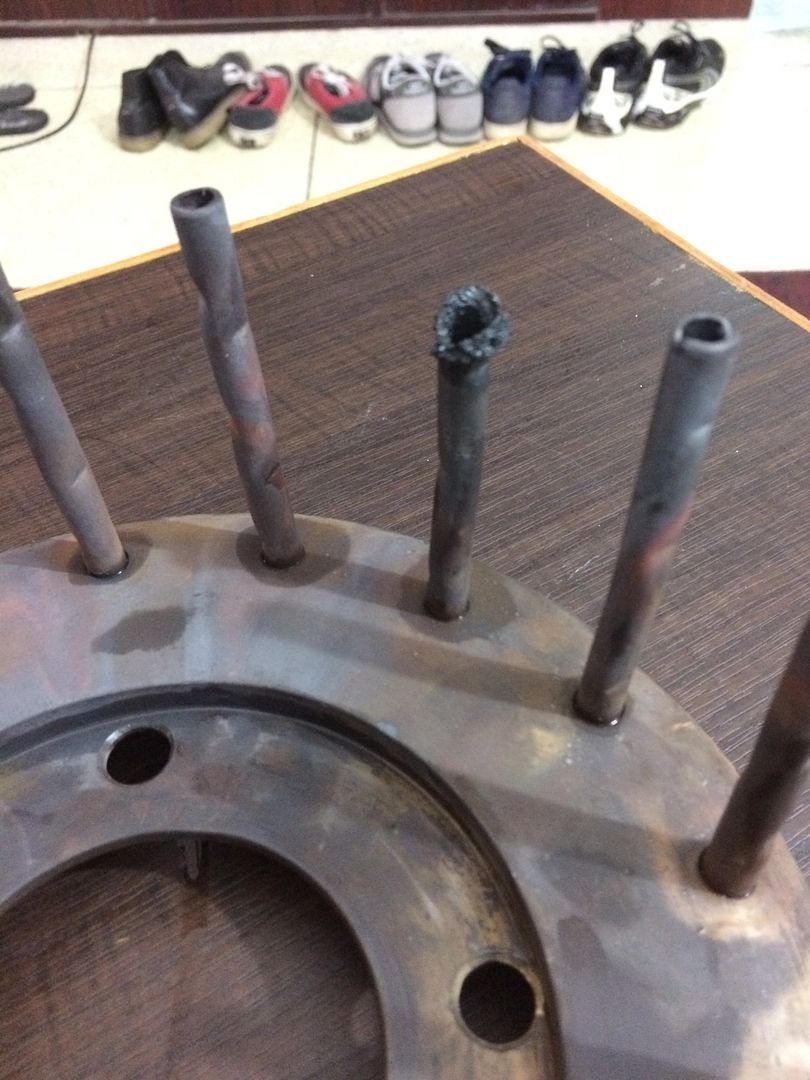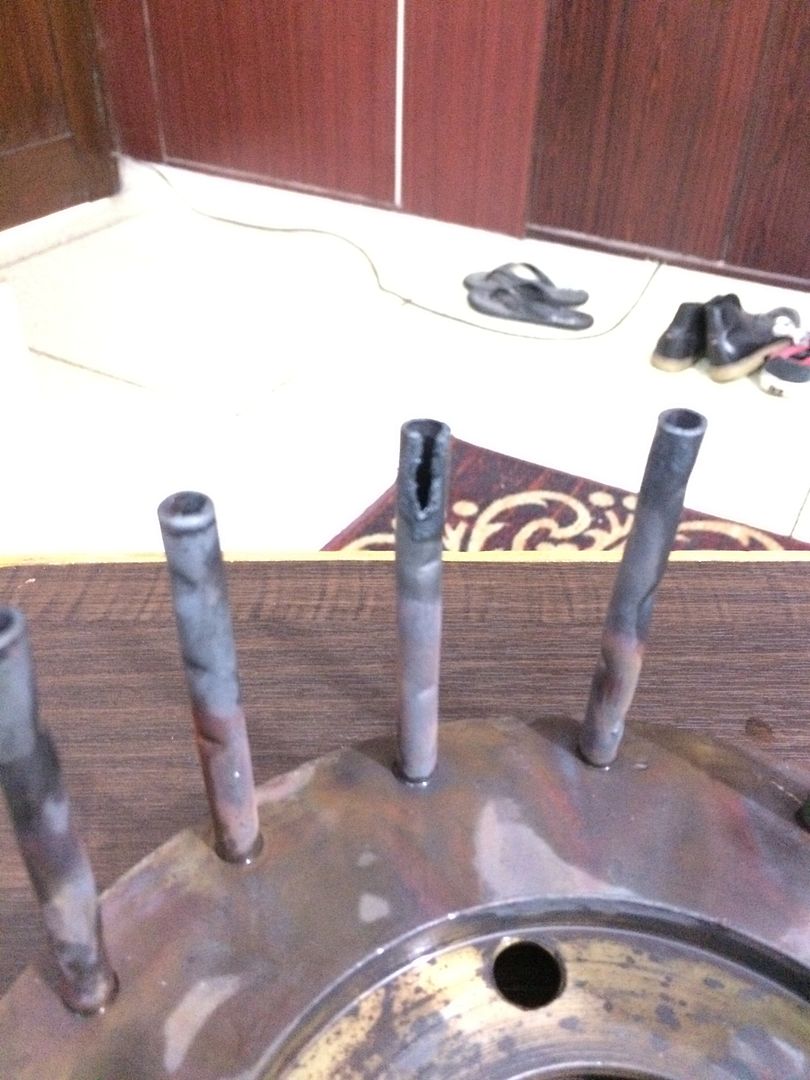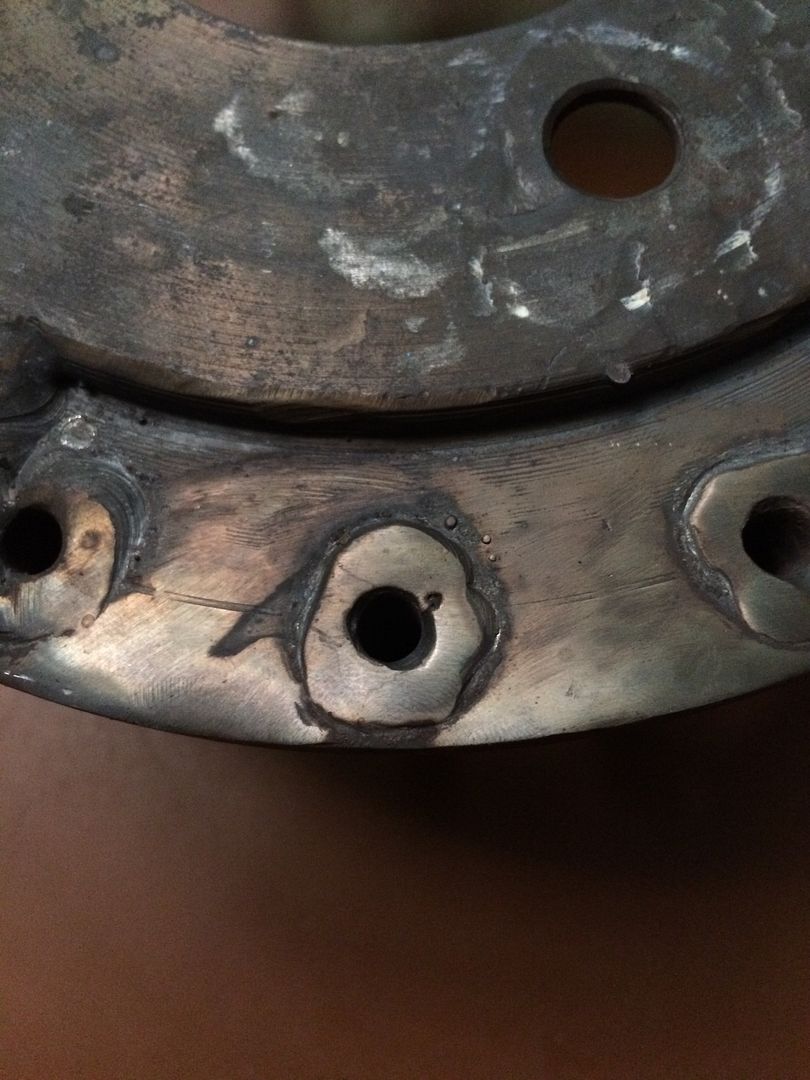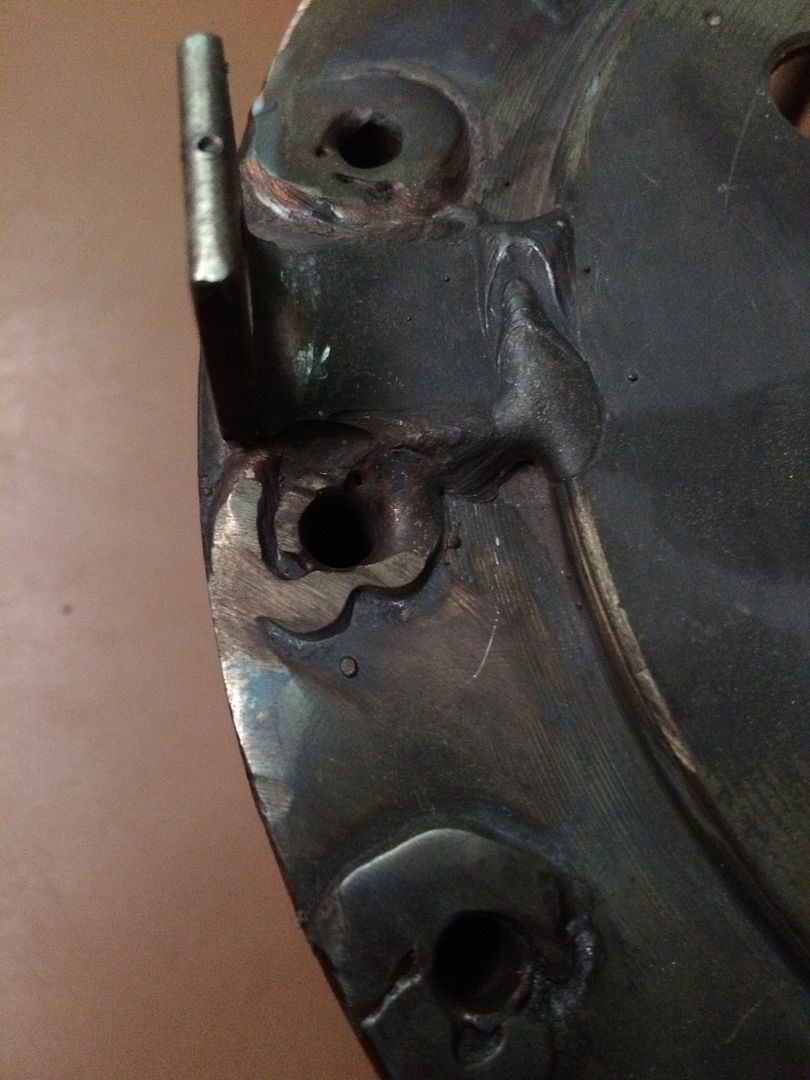|
|
Post by madpatty on Jul 1, 2015 0:56:22 GMT -5
Hi Racket, Yesterday i did a test run on gas.... With some severe consequences....i saw some particles coming out of the engine while running... After opening the engine:-   These were in the same upper region 11'o clock to 2'o clock position.... Now this is irritating, why this is happening. Cheers, Patty |
|
rythmnbls
Veteran Member
  
Joined: August 2011
Posts: 145
|
Post by rythmnbls on Jul 1, 2015 15:27:51 GMT -5
Patty, what material did you use for the sticks ?
|
|
|
|
Post by madpatty on Jul 1, 2015 15:35:38 GMT -5
Patty, what material did you use for the sticks ? SS304.. Cheers, Patty |
|
rythmnbls
Veteran Member
  
Joined: August 2011
Posts: 145
|
Post by rythmnbls on Jul 1, 2015 16:15:07 GMT -5
Evap sticks really should be inconel, 3XX series stainless steels don't last very long as you have experienced.
One source is oven elements, the outer sheaths make good sticks. I've also had good results with inconel 600 and I believe others have used an 800 series alloy, 625 would also be a good choice
Regards,
Steve.
|
|
|
|
Post by smithy1 on Jul 1, 2015 18:22:20 GMT -5
Steve is right...Inconel is the way to go, I'd go for the 600series....304 & 316 don't handle 1000C+ too well..600 series Inconel can handle ~1200c before it starts to complain. Contains ~72% nickle too.
Cheers,
Smithy.
|
|
|
|
Post by racket on Jul 1, 2015 19:54:15 GMT -5
Hi Patty
Could you please put a pic of the evaporator inlets up for me to see , especially the "burnt" ones.
It looks like you haven't got sufficient air/fuel cooling of the evaporator .
The larger "walking stick" shaped evaporators I've used in my DIY engines have only been made in 304 stainless , but theres a lot of cooling from the fuel evaporation , your gasious fuel will probably be near ambient temp by the time its injected into the evap , so no evaporative cooling .
I use 800 series alloy for my "micro" evaporators , its the sheathing on electric stove/oven elements .
Cheers
John
|
|
|
|
Post by madpatty on Jul 1, 2015 20:51:12 GMT -5
Hi Racket, I had already removed those two damaged evaporators so unfortunately i cant post their inlet pics.... But can post some other sample pics from the almost same inlets:-   Cheers, Patty |
|
|
|
Post by racket on Jul 2, 2015 2:25:32 GMT -5
Hi Patty
How close is the fuel manifold to the evap inlet , could there be a restriction to air flow ??
On ~17th June I mentioned that your evaporators had a bit too much heating surface and would probably burn ends , and that I recommended a bellmouth inlet and no D'ing so that airflow was increased to aid cooling of the evap .
If using gasious fuel theres no need for evaporators , so its understandable that there are "issues" , I'd suggest straight evaps , no D'ing , and use diesel/petrol mix rather than gasious fuel , the "smoother" airflow and evaporative cooling should keep those evap outlet temps down a bit .
Cheers
John
|
|
|
|
Post by madpatty on Jul 2, 2015 2:42:38 GMT -5
Hi Racket,
The fuel manifold is much far from the evap inlets....i had plently of axial space....its easily near 15-20mm.
I had to use gaseous fuel so as to rectify any hotspot issues before trying out liquid fuel and burning my NGVs again. Or say i am afraid of using liquid fuel.
Cheers,
Patty
|
|
|
|
Post by racket on Jul 2, 2015 4:56:25 GMT -5
Hi Patty
OK , so no restriction from the fuel manifold .
But please try to have some bellmouthing at the inlet to the evaporator to maximise flow into the evap , and definitely no D'ing as the extra restriction and turbulence will be slowing down the airflow speed , currently your evaporators are "over evaporating" to the point where the wall temperature is able to reach the melting point of the stainless.
If you wish to use liquid fuel , remove any jet nozzle you currently have so that gas temperatures will be as low as possible
Cheers
John
|
|
|
|
Post by madpatty on Jul 3, 2015 1:30:19 GMT -5
Hi Racket,
Just to collect the data i today tested the engine using the OLD Combustor, without any jet nozzle..(same everything else except the combustor)
And the working of the engine again reverted to normal...no red blades...no hotspots...
So there is some issue with the new Combustor only.
What i think the problem with the new combustor is the tertiary holes being too far down the combustor....this leaves no time for dilution...
The only problem with the old combustor was the holes blowing directly at the evaporators.
So i am thinking of making a new combustor with Tertiary holes a bit upwards and holes not blowing at the evaps.
What do you think?
Cheers,
Patty
|
|
|
|
Post by racket on Jul 3, 2015 5:08:45 GMT -5
Hi Patty
I've given you my suggestions for a flametube to burn liquid fuel in .
What has the position of the dilution holes got to do with burning evaporator outlets ??
The colour of the turbine wheel will indicate the average temperature going through it irrespective of the mixing quality or variations in T I Ts around the inlet annulus to the wheel .
Cheers
John
|
|
|
|
Post by madpatty on Jul 3, 2015 6:49:26 GMT -5
Hi Racket,
Not about the burnt evap outlets...
But still if the average temperatures are lower then isn't this a good thing.
Cheers,
Patty
|
|
|
|
Post by finiteparts on Jul 3, 2015 11:32:33 GMT -5
Hi Patty,
Sorry to see that your engine seems to have some hick-ups. I have a few observations...
First, the burning on the vaporizers appears to be on the inside surface of the vaporizer tube. This suggests that the flame is anchoring on the inside end of the vaporizer tube. Since on this combustor, you added the primary air holes in such a manner that they blow straight across the exiting flow from the vaporizer tube, I feel that you are stabilizing the flame in the wake of the vaporizer tube and thus burning it.
Most commercial vaporizer combustors use an offset plug flow to help form the stabilizing head end vortex and provide the needed air for burn out. If I recall, your old combustor had them between the vaporizer sticks? That is the more "correct" placement and I would go back to that.
Secondly, 304 stainless is absolutely fine for your vaporizers. The more exotic alloys are used to gain long term oxidation resistance or for their increased yield strengths, fatigue capability or creep resistance at higher temperatures. What you are seeing in your combustor is outright melting and the more exotic alloys would have actually been worse for that. Lets look at the melting points of some common alloys:
Stainless 304/304L = 2550-2650 F
Stainless 316 = 2500-2550 F
Inco 600 = 2470-2575 F
Inco 625 = 2350-2460 F
Inco 718 = 2300-2437 F
Hastelloy X = 2300-2470 F
So if you were designing your engine for really long life, long term oxidation resistance would be key, driving the use of a more exotic alloy. Also, if there was a transmitted load, like a turbine casing, then you need the higher strengths at temperature, but your vaporizers should be seeing a very minimal loading so that is not an issue for you.
I agree with John in that you need to bellmouth or chamfer the inlets of the vaporizers better. Try to be as consistent as possible in making the chamfer, because small changes in the chamfer size can modify the flow drastically.
Good luck!
Chris
|
|
|
|
Post by racket on Jul 3, 2015 17:02:50 GMT -5
Hi Patty
Your turbine "average" temperature has to be considered in respect to a number of things , such as thrust output changes, mass flow changes , currently you're just looking at its temperature without considering them , if for instance your new combustor is producing more thrust then the increased "average" turbine temperature is understandable , but just blaming the new combustor for increased temps isn't a good idea.
Low temperatures taken in isolation mean nothing , for maximum power you want maximum "safe" temperatures.
Could you please supply data on your "new" injector tests so that I have an idea of how they are working compared to your old fuel distribution system, I need to know within what limits the flows are equal among all injectors , if you have an injector flowing considerably less then the gasious fuel mixture strength could be within ignition limits within the evaporator exacerbating the cooling requirements , liquid fuels shouldn't get within combustion limits until "all" of the Primary air is added .
Cheers
John
|
|